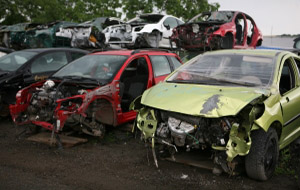

The pension plight of a family friend has put me in a somewhat ugly mood. This man, Bill (not his real name), went to university with my father, and I have known him and his family all of my life. Over dinner at my parents’ a few weeks ago, Dad told me that the company Bill worked for until his retirement—now called Catalyst Paper—is in financial difficulty and Bill is worried about his pension. Dad thought maybe I could help.
Before calling Bill, I did some research. The news was not good. Catalyst Paper had gone into court-supervised creditor protection at the end of January. I called Bill to talk about his pension. He is keeping well informed about the situation but was confused about legal representation, and a group was asking for Bill and other pensioners to contribute to a “war chest.” I was subsequently able to determine that the court had appointed counsel for pension plan members and had made arrangements for legal fees, so I advised Bill that he shouldn’t get further requests to contribute for legal fees at this stage. His only practical course of personal action was to sit tight and hope for the best outcome.
Bill has a “junk pension.” Like junk bonds, a junk pension has a significant risk of default. According to media reports, in the event that restructuring of the company fails, there is a fallback bid for Catalyst that would orphan the pension plan, which would then be wound up with expected pension reductions of 30% to 35%.
The number of Canadians with junk pensions is growing. Here are some extracts from the 2011 Report on the Funding of Defined Benefit Pension Plans in Ontario, published by the Financial Services Commission of Ontario in March 2012, concerning DB plans registered in Ontario but excluding designated plans, frozen plans (plans where members are no longer accruing future DB or DC benefits) and the seven largest public sector plans.
- The median funded ratio on a solvency basis has decreased from 86% to 85%.
- 88% of the plans were less than fully funded on a solvency basis (versus 84% in the 2010 report).
- In total, on a solvency basis, almost 1,300 plans (88%) were less than fully funded and covered 1.7 million plan members (92% of total members).
Table 2.7 Solvency Funded Ratio
| Solvency Ratio (SR) | Final Average | Career Average | Flat Benefit | Hybrid | Frozen Hybrid | MEPP | All Plans |
| SR < 0.60 | 5 | 3 | 1 | 1 | 3 | 5 | 18 |
| 0.60 ≤ SR < 0.80 | 98 | 32 | 74 | 83 | 26 | 33 | 346 |
| 0.80 ≤ SR < 0.90 | 202 | 82 | 114 | 168 | 40 | 15 | 621 |
| 0.90 ≤ SR < 1.00 | 102 | 25 | 35 | 84 | 24 | 9 | 279 |
| 1.00 ≤ SR < 1.20 | 64 | 7 | 10 | 31 | 12 | 6 | 130 |
| SR ≥ 1.20 | 20 | 3 | – | 14 | 5 | 2 | 44 |
| Total | 491 | 152 | 234 | 381 | 110 | 70 | 1,438 |
| Median Ratio | 0.86 | 0.84 | 0.83 | 0.86 | 0.86 | 0.78 | 0.85 |
- Overall, the median solvency ratio for pension plans is projected to decrease from 87% at the end of 2010 to 72% at the end of 2011.
Worse still, the bad news of solvency ratios is compounded for pensioners of bankrupt companies because the cost of purchasing annuities are not fully reflected in solvency ratios. The reason for this is that, under Canada’s life insurance regulatory system, life annuities are relatively risk-free compared to pension-commuted values underlying solvency ratios, which include a significant allowance that reflects a level of default risk for pension plan benefits.
Bill’s situation hits close to home, and I am angry about it. You see, when he retired 15 years ago, Bill believed that his DB pension was properly funded and thus guaranteed and secure. He believed this because we in the pension industry—actuaries, accountants, regulators, consultants and plan sponsors—were telling people so.
Well, we have been proved wrong, and the pension promises we made to Bill and potentially almost 1.7 million of DB plan members in Ontario—with (most likely) similar numbers across the rest of Canada—are in jeopardy. In fact, we have generally abandoned those promises as the industry now talks about “risk asymmetry” and the need for “risk sharing,” and we accept systemic inclusion of a credit risk allowance in determining pension solvency values. I can accept this redefinition of the DB pension promise for those who have yet to retire, but when it comes to those pensioners whose expectations for security of their retirement income are being dashed, we should feel ashamed.
